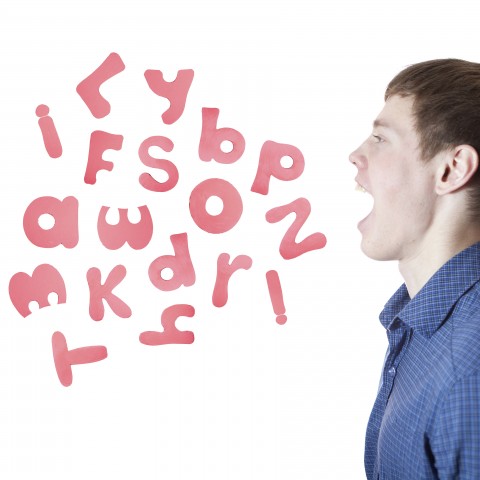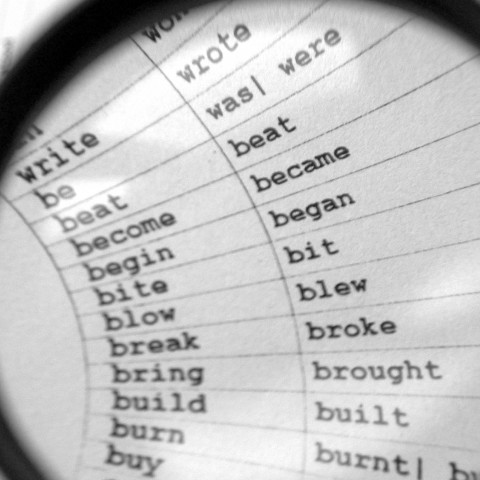
Let’s face it. Hebrew is not the most popular language choice for those seeking to acquire a new one. It’s not as sexy-sounding as, say, French or Spanish. It doesn’t have international status as a lingua franca for culture or commerce. It’s spoken by a mere nine million people worldwide.
Yet there are a number of great reasons to make it your next language undertaking. In this article, we’ll answer the question “Is Hebrew hard to learn?” and talk about its simpler and more complex aspects. But first, we’ll show you why you should learn this beautiful language.
The number-one reason is that Hebrew is, quite simply, unique among all languages, and for more than one reason. It’s the language of nearly the entire Old Testament (the Book of Daniel is written in Aramaic, a closely related Semitic language that’s very similar to Hebrew). When God said, “Let there be light,” he said it in Hebrew! So when you learn Hebrew, you’re connecting yourself to a primal part of history. Indeed, the earliest examples of Paleo-Hebrew date back to the tenth century BCE, making Hebrew at least 3,000 years old!

Obviously, the Hebrew language has contributed greatly to Western civilization through the vast literary works in the Hebrew language that are part of the Biblical canon. Just as interesting is the fact that Hebrew ceased to be used as a spoken language between the third and fifth centuries. During this time, it was relegated to לשון הקודש (leshon ha-kodesh), or the Language of Holy Matters, used for Bible study, prayer, and religious poetry—but not for everyday communication.

It wasn’t until the nineteenth century that Hebrew was revived as a spoken language. In fact, this was achieved through a linguistic enterprise, the likes of which had never been seen before and which has not been replicated since. A number of highly motivated and impressively talented individuals, most prominently Eliezer Ben Yehuda, set about coining Hebrew words to describe the modern world, so removed as it was from the ancient context of Biblical Hebrew.
They began publishing Hebrew dictionaries and periodicals, codifying grammatical rules, putting on Hebrew-language theater productions, founding Hebrew schools and clubs, and generally revitalizing the language as an everyday tongue equal to any other spoken language. In fact, Eliezer Ben Yehuda is credited with raising the first child to speak Hebrew as his native (and at least initially exclusive) tongue, keeping his son Itamar under something like house arrest in his early years so he wouldn’t be exposed to other languages, which he felt might confuse the child.
Today, Hebrew is the State of Israel’s official language. It’s the mother tongue of millions of people, used in newspapers, books, TV programs, movies, music, poetry, food labels, websites, legislation, advertisements, and any other use you can think of for a language. So when you learn and speak it, you’re participating in what could be argued to be the most successful linguistic experiment in history—the revival of a language that had not been spoken for over a thousand years!
What’s more, just as Hebrew is unique among languages, Israel is a country unlike any other. Geographically at the crossroads of three continents—Europe, Asia, and Africa—Israel is a true melting pot of cultures, with immigrants and their descendants from literally all four corners of the globe. It’s also a fascinating meld of ancient culture with cutting-edge modernity. Learning Hebrew gives you direct access to all of this rich diversity, and to a wealth of unique and interesting literature, art, music, cuisine, and people.

So why should you learn Hebrew? Perhaps the real question is why not?!
 Table of Contents
Table of Contents
- Is it Hard to Learn Hebrew?
- The Hardest and Easiest Aspects of the Hebrew Language
- I Want to Learn Hebrew, But Don’t Know Where to Start
- What Makes HebrewPod101 Your Partner in Learning Hebrew with Success?
1. Is it Hard to Learn Hebrew?

So you’re interested in the possibility of studying Hebrew, but before you take the plunge, you just have one big question: Is Hebrew hard to learn? This question is easier asked than answered, as it depends on many factors. For instance, if you know another Semitic language, such as Arabic, this will give you a number of advantages as you’ll already be familiar with the basics of vocabulary and grammar.
If you speak a language with gutturals, such as French or German, this will go a long way toward helping your Hebrew pronunciation. If you’ve studied the Hebrew Bible at all, this can also be of help, though it can also cause confusion due to the divergence of modern Hebrew from Biblical Hebrew.
And overall, how hard it is to learn Hebrew will depend on how good your ear is, how willing you are to make and learn from mistakes, and how much effort you put in.
All that being said, learning Hebrew is definitely a manageable task. It’s not the hardest language to learn by a long shot, though we’ll admit it’s not the easiest either. We’re going to take an honest look at various features that might make the Hebrew language hard for some learners, and other features that make Hebrew relatively easy.
In this author’s opinion, while Hebrew does present some key obstacles, especially in the very early stages, it’s an extremely logical and economical language overall. For this reason, I believe anyone with the right attitude absolutely can and should learn Hebrew with the certainty that success will come if you invest in your studies.

At HebrewPod101.com, we’re committed to your language-learning success. To that end, we have created a vast library of fun, engaging, and enriching material, both written and in audio format, to help and guide you in your Hebrew language endeavors. So don’t stress! While learning any language comes with difficulties, you can take comfort in the knowledge that we are here to help you along the way!
Without further ado, let’s get into the thick of it and see which features of Hebrew will likely present a challenge and which are more inviting. We’re confident that once you see the breakdown, you’ll be inspired to go for it and study Hebrew in earnest.
2. The Hardest and Easiest Aspects of the Hebrew Language
Let’s start with the good news and take a look at some of the ways in which Hebrew is, in fact, one of the easier languages to pick up. You may actually be surprised by some of them!
The top five easiest aspects of learning Hebrew
1. It’s phonetic.

Like Spanish and Italian—and unlike English and French—Hebrew is phonetic. This means that, with a few exceptions, the sounds that Hebrew letters make are constant and don’t change depending on their location in a word. That makes learning new vocabulary a whole lot easier, as you can pronounce new words with confidence, as long as you know the sound each Hebrew letter makes.
What’s more, there are only five voiced vowel sounds and one unvoiced vowel sound. No diphthongs (vowel combinations, like the “ou” in the English word “mouse”) to complicate matters. It’s just as simple as learning six vowels, and you’re set!
To make things even easier in terms of proper pronunciation, there are only two possible ways to stress syllables: either the last syllable or the penultimate syllable gets stressed. There are some imported words, mostly from English, where this is not the case, but the vast majority of Hebrew words do follow this rule.
2. It’s root-based.

While this may sound like something you would find printed on a bottle of vegetable juice, “roots” here refer to verb stems, or שורשים (shorashim). In true testament to its logical nature, Hebrew uses words based on three- or four-letter roots from which various words can be formed using different patterns. There are patterns for verbs of different kinds (e.g. accusative, reflexive, etc.), for nouns of different kinds (describing actions, equipment, diminutives, etc.), as well as for adjectives and adverbs. Words from the same root can be viewed as members of a single family, with a semantic connection (i.e. their individual meanings will all share a common theme).
You may be asking how this makes learning Hebrew easier. The answer is that once you’ve learned a word or two based on a given root, you’ll have more than a fair chance of at least approximating the meaning of another word from the same root. Let’s take a look at an example.
The root ח-ב-ר (kh-v-r) denotes connection or connectivity, so all words deriving from it will have a meaning along those lines. Obviously, once you get to know the conjugation patterns, you’ll also be able to infer meaning with greater accuracy. But even without this knowledge, you can be sure that any word from this root has something to do with connection. So, say you know the word חבר (khaver) means “friend,” and you suddenly see the word חיבור (khibur). You may not know what it means, but you can guess that it has something to do with connection. And you would be quite right! חיבור (khibur) means “connection”!
Here are some other words formed from the same root, along with their meanings. (The root letters have been bolded for easier identification.)
- חבורה (khavurah)
“gang,” “pack”
- חברה (khevrah)
“company,” “society”
- חבר‘ה (khevreh)
“group of people,” “guys,” “folks”
- לחבר (lekhaber)
“to connect [one thing to another]”
- להתחבר (lehitkhaber)
“to connect [yourself to something]”
- מחברת (makhberet)
“notebook” [i.e., a ream of connected pages]
- תחביר (takhbir)
“syntax” [i.e., how we connect words to each other]
3. It only has three tenses.

Here’s one that should give you a huge sigh of relief. Unlike many languages, English among them, which have various tenses both simple and complex (e.g. “I have been studying Hebrew for a year.”), Hebrew is content to make do with just three—simple past, simple present, and simple future—the vast majority of the time. You can still express all of the same things as in English, but you would rely on context for the nuances of time. For example:
- אני אוכל עכשיו.
Ani okhel akhshav.
“I am eating now.”
* The word עכשיו (akhsav), meaning “now,” tells us that this is an ongoing action happening at present, equivalent to the present progressive tense in English.
Contrast this with the following:
- אני אוכל במסעדה פעם בשבוע.
Ani okhel be-mis’adah pa’am be-shavu’ah.
“I eat at a restaurant once a week.”
* In this case, we’re talking about a general habit, which is equivalent to the simple present tense in English.
4. In simple present, you never need to use the verb “to be.”

That’s right! In the simple present tense (the only present tense Hebrew has), we don’t use the verb להיות (lehiyot), or “to be.” That ought to save you some work! Here are a couple of examples:
- אני סוזי.
Ani Suzi.
“I [am] Susie.”
- אני סטודנטית.
Ani studentit.
“I [am] a student.”
- האוכל טעים מאוד.
Ha-okhel ta’im me’od.
“This food [is] very tasty.”
5. There is only one article.

This is definitely a huge advantage in comparison to other languages. Languages vary widely in their use of articles. For instance, Slavic languages are devoid of articles, while Italian has a whopping twelve types of articles. Spanish has nine, and English, French, and German have three each. But Hebrew only has one article to learn, so that’s one thing you can definitely be grateful for. Whether male or female, singular or plural, Hebrew uses only the prefix ה- (ha-) for all definite nouns.
The top five hardest aspects of learning Hebrew
You’ve seen a number of key ways in which Hebrew learning is facilitated by the language’s logic and economy. Now let’s face the music and confront the big question: Why is Hebrew so hard to learn for many students?
Here’s an overview of the unique challenges Hebrew poses.
1. You have to learn a new alphabet, probably written in the direction opposite of what you’re used to.

This is likely the first thing that may have occurred to you as a potential challenge. And you would be right. This is an obstacle that you wouldn’t face, by and large, if learning any of the Romance or Germanic languages (apart from a few morphemes unique to each language). With Hebrew, you’ll be learning an alphabet completely different from what you know, which is also written from right to left rather than left to right.
That said, the alphabet only contains twenty-two consonants—versus English’s twenty-six—and six vowel sounds. As for the consonants, there’s a further complication in that the letters ב (bet), כ (kaf), and פ (peh), are either plosive or fricative depending on whether they use a דגש קל (dagesh kal), a diacritical point in their center. So, while ב is equivalent to /v/ in English, בּ is equivalent to /b/; כ is pronounced kh, like a Scot pronouncing the “ch” in Loch Ness, but כּ is /k/; and פ is /f/ while פּ is /p/.
Additionally, the letters כ (kaf), מ (mem), נ (nun), פ (peh), and צ (tzadi) all have distinct final forms, meaning they’re written differently when they come at the end of a word. Their final forms are:
ך, ם, ן, ף, and ץ, respectively.
Obviously, apart from learning a new alphabet, you’ll also have to get accustomed to reading and writing from right to left. It may be of interest to know why this is the case. Old as it is, and owing to logistical issues of climate and technology, proto-Hebrew was originally chiseled, carved, or engraved into rock or clay rather than written on animal skin or papyrus, unlike cuneiform. This is because, most people being right-handed, it was easier to hold the chisel in the left hand and hammer with the right. On the other hand (no pun intended), when writing with ink, writing from left to right prevented right-handed people from inadvertently smudging the ink on the scroll or page before it had dried.
2. Say goodbye to written vowels, for the most part.

To complicate matters further, Hebrew is a type of language—like Arabic and Persian—called an abjad. These languages, in written form, by and large only supply the reader with consonants, omitting any diacritical marks (the dots and dashes within, above, below, or next to letters that indicate vowel sounds and other features of pronunciation). These sounds are generally inferred, though there are cases of words with the same consonants and various possible vowels, which can be tricky. Here’s an example:
- דָּוִד
David
“David” (the proper name)
- דּוֹד
dod
“uncle”
- דּוּד
dud
“boiler”
* Note that the consonants in all three words are the same, with only the vowels changing. Because written Hebrew does not generally supply us with the vowels, these would all appear to be the same word to the uninitiated. Let’s see how this might look in the context of a sentence, first without vowels, then with them.
- דוד דוד קנה דוד חדש.
דּוֹד דָּוִד קנה דּוּד חדש.
Dod David kanah dud khadash.
“Uncle David bought a new boiler.”
Don’t let this phase you, though. If nine-million Hebrew-speakers can read without the aid of written vowels, you can get there too! There aren’t too many cases where words share the same consonants but differ in vowels alone. And those that do exist are generally quite easy to distinguish from their homographs by using context clues. When this isn’t the case, the author will usually supply the diacritical marks to allay confusion.
3. Hebrew uses a different script for printed letters and written ones.

Continuing in the orthographical vein, printed Hebrew—such as what appears in books, newsprint, most ads, subtitles, and so on—uses block letters, whereas written Hebrew uses cursive. To be fair, though, the case is much the same in English—or at least it traditionally was for those old enough to have been taught to write in cursive when penning letters and so on. In any case, cursive Hebrew is very similar to its printed counterpart. The written form of the letters is actually no more than a matter of convenience, as round letters are easier to write than square ones.
4. There are male and female forms for nouns, pronouns, verbs, AND adjectives.

This one is definitely a challenge, though by no means an insurmountable one. For all of its many complications, English is free of grammatical gender (though, as history buffs will know, this was not always the case). However, many languages have grammatical (versus biological) gender, meaning that even inanimate objects are gendered either masculine or feminine (and in the case of some languages, such as German, they can be neutral, as well).
Hebrew does not have a neutral form, but it does have masculine and feminine forms—both singular and plural—for nouns, pronouns, verb conjugations, and adjectives. While this may seem overwhelming, the good news is that these forms are standardized, meaning that once you learn the right suffixes and conjugation forms to make a word either masculine or feminine, and plural or singular, you’ll be able to apply the same pattern over and over to different words.
There are, of course, irregulars, but not many. And they’re only irregular in that they use the masculine form for a feminine word or vice-versa, rather than having a totally non-sequitur plural form as is often the case in English (e.g. man, men). For example, -ים (-im) is the plural suffix for masculine nouns, while -ות (-ot) or -יות (-iyot) is the plural suffix for feminine nouns.
Here are a few examples:
- בן, בנים
ben, banim
“son,” “sons”
- בת, בנות
bat, banot
“daughter,” “daughters”
- חודש, חודשים
khodesh, khodashim
“month,” “months”
- ארוחה, ארוחות
arukhah, arukhot
“meal,” “meals”
- בקבוק, בקבוקים
bakbuk, bakbukim
“bottle,” “bottles”
- שקית, שקיות
sakit, sakiyot
“bag,” “bags”
5. There are seven binyanim (verb conjugation patterns).

There’s no way around this one. There are seven distinct types of verbs in Hebrew, each with its own pattern of conjugation. Compare that to, say, Spanish or Italian, where there are just three basic patterns, or English where there is only one basic pattern (which is chock-full of irregulars).
That being said, these binyanim, or conjugation patterns, are here to help you. They’re not mere morphological patterns, but have semantic meaning as well. In layman’s terms, whereas the conjugation patterns in Spanish and Italian are linked to their orthographic endings (the letters they terminate in), Hebrew binyanim tell you the character of the verb.
For instance, the binyan התפעל (hitpa’el) indicates a reflexive verb, meaning that when we learn how to use and identify this conjugation pattern, we also learn how to change an indicative (a regular statement or question) verb into a reflexive one (meaning it’s either acting on itself or on its agent). This also means that even if we’re not completely sure of a verb’s meaning, we can surmise something about the situation or relationship being described based on its binyam: Is something or someone acting on something or someone else? Is something happening passively to something or someone? Is someone or something activating or animating something or someone else to do something?
So yes, while the binyanim are tricky and take plenty of practice to master, they give you something you won’t find in many other languages: an understanding of the logical relationship between words. This will help you immensely as you progress with your studies, so look at it as a challenge that is well worth tackling!
3. I Want to Learn Hebrew, But Don’t Know Where to Start

Considering that Hebrew is a very logical, even mathematical, language, it’s best to get a good foundation when you first start your studies. While some may consider this dull, you can be certain that any seeming drudgery will pay off in dividends later on.
The following are some tips for getting started:
1. Learn the alphabet.
A good recommendation is to begin by learning the alphabet, as well as the correct pronunciation of all the consonants and vowels. Remember that Hebrew is phonetic, so once you learn these sounds, you only need to be able to reproduce them wherever they appear. There’s no variation as in English or French. With only a few exceptions, the same grapheme (written unit) will correspond to the same phoneme (sound unit) anywhere it appears.
2. Learn basic verb conjugation.
From there, you would want to focus on learning at least the more common binyanim, or verb conjugation patterns, so you can use verbs freely. You could start by focusing on just one tense and look at various verbs in this tense. Or you could focus on one binyan, tackling its forms in all three tenses. Any way you choose to go about it is fine, as long as you’re systematic.
3. Build up a basic vocabulary.
This is key to any language you’re trying to learn. Rather than focusing solely on technical issues like grammar and pronunciation, make sure you spend a lot of time building your vocabulary. Start with simple, everyday words that would be useful in common situations. Think of how children learn a language: they start with the most basic building blocks before they ever move on to forming sentences and questions. This should be your guiding principle. You have to crawl before you can walk, after all.
4. Use realia for fun and effective learning.
When undertaking any language endeavor, exposure is key. You want to flood yourself with as much authentic Hebrew language as you can. If you’re in Israel or know a group of Israelis living abroad where you are, try to hang out with them and practice any vocabulary you can. Listen attentively to their conversations and take part as much as possible. To this end, it’s best to identify patient native speakers who will be willing to help and encourage you.
No matter where you are, the Internet is a wonderful resource full of endless opportunities to expose yourself to authentic native Hebrew. Whether through music, movies, TV shows, or any other medium, Israel is a true powerhouse of media production, so you have your pick. No matter what your tastes are, you’re sure to find something to your liking in the Hebrew language. Use these media to learn new words, practice your comprehension, or work on pronunciation.
5. Start small and work your way up from there.
Work with smaller chunks at first before you try to take on, say, translating an entire song from Hebrew to your native language. Focus on individual words first, then word combinations, then sentences, then paragraphs (or stanzas), and only then entire works. Keep your goals realistic and achievable so that you’ll not only succeed in reaching them, but feel positive about your progress.
It’s worth noting that, as a country of mass immigration from countries the world over, Israel produces material specifically designed to help עולים חדשים (‘olim khadashim), or “new immigrants,” learn Hebrew. This even includes simplified newspapers that print stories on current affairs and cultural interest stories in basic Hebrew to facilitate easy reading for non-native speakers.
6. Be consistent.
Make sure you’re consistent in your studies. Dedicate time every week to your language studies, and try your best to stick to it, even if it’s only a couple of hours. Practice the words or grammar points you’ve learned until you’re sure you have dominated them. Go back and review previous lessons every now and again to refresh your memory. Most of all, don’t give up! Results are the direct product of your commitment to your goals!
4. What Makes HebrewPod101 Your Partner in Learning Hebrew with Success?

HebrewPod101’s raison d’être is to make your language-learning experience a success, and to make sure you have fun along the way. We offer a wealth of audio, video, and written lessons designed and delivered by native Hebrew-speakers. These lessons focus on real-life topics, ranging from using public transportation to asking someone out on a date.
We also offer a multitude of learning materials, all designed with both the general difficulties of language-learning and the particular difficulties of Hebrew in mind. With HebrewPod101, you can build your vocabulary with our Free Word of the Day, practice grammar with our free mobile apps, track your progress online, and benefit from a vast array of study tools. These include flashcards, word banks, and even a voice recorder for working on your pronunciation.
With HebrewPod101, you’ll have access to lesson notes which accompany our audio and video lessons. You can also repeat any lesson at any time and check your knowledge using our quizzes. The best part of all is that, unlike in a classroom setting, you can learn at your own pace. This gives you the flexibility to work your studies in around your personal schedule and progress according to your drive, availability, and needs.
At HebrewPod101.com, we’re committed to making the challenges of learning Hebrew not only surmountable, but welcome. After all, nothing feels better than setting your sights on the summit, scaling the mountain step-by-step, and finally standing way above, looking out at the expanse below, knowing you got there thanks to your commitment and hard work. Let us be your partner in success. Sign up today to start getting new Hebrew lessons for free every single week!
Before you go, we would love to hear your thoughts on learning Hebrew. Are you ready to start after reading this article, or do you still have questions or concerns? Let us know in the comments, and we’ll do our best to help you out!










